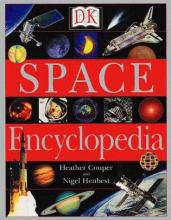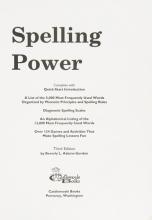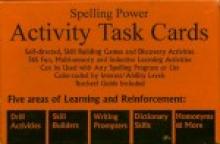No name
Something Other Than God
Here's a brief sample from a conversation she had with the man she would later marry:
"I don't see how anyone could look at that and not believe in God", Joe said, his voice lowered as if out of reverence for this masterpiece of nature.We especially enjoyed the humorous stories about her antics as a stubborn kid, such as moving all the Bibles in the library to the "Fiction" section. Yes, God really doesn't give up on anyone! ;)
Maybe it was the influence of the gin and tonic, but I figured that now, when we were both happy and calm, wa sas good a time as any to have this discussion. "You know that I don't believe in God, right?" I said.
Joe kept his eyes on the cloud. "Yeah, I think you said something about that once."
I waited for him to elaborate on that statement; I'd expected more of a reaction. He remained silent, so I asked, "Does that bother you?"
"Nah", he said casually. "You're reasonable, so you'll get over the atheism thing eventually."
Something to Write About, History Edition
The directions, written directly to the student, are broken down into three parts: Early American History for grades 1-3, American History - Discovery through Westward Expansion for Grades 4-6, and World History -Ancient Civilizations through Modern Times for Grades 7-8. The student is directed to compile a book which will include maps, illustrations and compositions that he creates while studying the particular time period. Extensive lists of maps and illustrations to be made are included. But the lists of suggested writing activities are the best parts of the book.
Here are a few samples from each section:
Grades 1-3 - Write a prayer to St. Isaac Jogues; pretend you are George Washington at Valley Forge, write a speech to give to your soldiers to encourage them not to give up; make a chart showing three parts of our government and what they do.
Grades 4-6 - Write a newspaper article about the Louisiana purchase; write a two page expository essay comparing the French and Indian War with the Revolutionary War; pretend you are a soldier in the Civil War and write a three page letter to family at home.
Grades 7-8 - Write an expository essay describing Greek government and how it functioned; write a diamante (poem) about the early Christians just after Jesus was buried and before He had risen.
The second best thing about this book are the definitions of literary terms in the appendix. Each kind of essay required in the book is explained, many different kinds of pattern poems are demonstrated, and common literary terms, such as metaphor and personification, are defined. Your child would learn a lot about writing techniques and constructions by using this guide. The bonus is that the types of writing learned by making the history book can be applied in other learning situations.
The author includes samples of student work from each of the grade level sections. These can be valuable especially if a student is "stuck," or doesn't understand the assignment.
The student keeps the maps, illustrations and compositions he creates in a safe place until it is time to put the book together. The student can choose from several suggested methods for binding the book.
Some of the writing activities for Grades 1-3 would be difficult for a 1st grader and some 2nd graders, but they could easily be adapted. A child could dictate his work, or be required to write shorter versions of the assignment. The program is flexible and designed so that you can pick and choose the activities that best fit the child.
This kind of activity is good on many levels. It gives the student practice in needed skills while doing something meaningful (e.g. learning about metaphor by writing it instead of filling in a workbook). It requires the student to extend his thoughts about the facts he learns, moving him to a higher level of thinking. Best of all, he has a record at the end of the year of all that was learned and accomplished. That is very satisfying for a student of any age.
This book is also available from the author at:
Marge Fenelon,
3558 E. Cudahy Avenue,
Cudahy, WI 53110-1103.
Phone & Fax 414-769-6742
Email: fenelon@execpc.com
1-877-815-0544
Sound Beginnings
The program includes everything you will need including a 500+ page Bible reader, audio tape, flash cards, notebook, parent manual, handwriting paper, worksheets, and a pencil and gripper. Most of the program is non-consumable and could be used with any other children you may have. The lady who developed this modeled it (with her improvements) off of the Spalding method (i.e. Writing Road to Reading). She is a Catholic homeschooling mom with a Montessori background.
Note: The author of this program has used a Protestant Bible because the only Catholic one available that was designed for phonetic readers had just as many (if not more) theological errors as the Protestant one. The introduction to this program provides information on which passages should be corrected.
Space Encyclopedia
We've started working our way through parts of this book as a read-aloud for younger children but have enjoyed it especially for the pictures. It covers everything from the Hubble Space Telescope to the surface and atmosphere of the Sun, Moon and Planets, from Space Pioneers to star maps, from explanations of various types of telescopes to black holes and discussions of the possibility of extraterrestrial life. We've only read a small portion of the text so far, but were pleased to find that the text came out better than expected in several litmus-test areas. The detailed charts on things you can see in the night sky was very helpful.
Spelling for Young Catholics
Seton Home Study has published a full line of Catholic spelling texts. Unfortunately, we have a difficult time providing reviews because we wish only to review the most recent editions and Seton revises their books frequently. You may view sample pages of these books on Seton's Website.
Spelling Power
This review of Spelling Power includes a comparison with Phonetic Zoo and My Catholic Speller.
Spelling Power is a single volume, non-consumable resource for teaching spelling to children (and adults) of all ages. It includes over 5,000 spelling words organized by rule and difficulty level, dozens of activities to help the child remember the correct spelling, extensive notes explaining how and why the program was designed and a clear explanation of how the program is to be used.
Unique to this program is the built in review of misspelled words and the use of words that are most frequently misspelled by students on essay exams. Students also study only those words that they don't know, unlike other programs that require the student to study both familiar and unfamiliar words.
The program begins with the student taking a placement test to determine what "level" they will be using. Following placement, the student spends 15 minute each day studying spelling. Each session begins with the parent reads a list of words to the student for 5 minutes. The student spends the next 5 minutes going through a series of review stages with the misspelled words that research has found helps students retain the correct spelling. The final 5 minutes are spent in fun activities that reinforce the correct spelling of misspelled words. We have found that our children, including one who is not naturally a good speller, did not need the last 5 minute activity block.
We have successfully used this program for many years and find it particularly suitable for grades 5-7. The program is flexible in that it allows for words that the child frequently misses on their own school work to be entered on to the spelling list. We've found that in grades 5-7 the children took Spelling Power more seriously then spelling workbooks (that is, they benefited from having the teacher looking over their shoulder while they were spelling to keep them on task) and it allows them to accelerate beyond other spelling programs by focusing on just those words that they don't know how to spell and is therefore time efficient. A drawback to this program is that it is teacher intensive. This is especially a problem for large families. We resolved this problem in our own home by using My Catholic Speller in grades 2-4 and the high school level of Phonetic Zoo when the child had finished level H in Spelling Power.
My Catholic Speller is an excellent spelling program for young children. Not only does it teach them the correct spelling of many words that they will be using in their writing, but it also imparts knowledge of and an interest in our Holy Faith. Our children enjoy using this program and are able to do so independently (after reading the list words aloud with a parent.) After completing Level D, our children have entered the Spelling Power program at above grade level. My Catholic Speller is available from Catholic Heritage Curriculum.
Phonetic Zoo is reviewed separately, however it should be noted that we found Spelling Power to advance children to the high school level of Phonetic Zoo rather quickly. There have been some debates about the appropriateness of the "rules" found in Spelling Power. Phonetic Zoo provides different rules that were quickly learned by our oldest child (who is not naturally a good speller.) At the beginning of eighth grade he worked through the entire Phonetic Zoo high school level in 3 months and was able to apply the spelling rules in his essays. We did a follow up test to the effectiveness of Phonetic Zoo by using the final Spelling Power lists. He missed less then 5% of all words on the last two levels of Spelling Power, and the words missed were rated as college level.
Spelling Power Activity Task Cards
The Spelling Power Activity Task Cards provide a multi-sensory approach to spelling instruction. (The activity cards are coded to indicate a visual, auditory, kinetic, and/or tactile instruction style.) Such an approach gives a child multiple ways to "retrieve" the phonics rules from his "mental filing cabinet." This approach is particularly well suited for children who have trouble retaining their spelling lessons, or have learning disabilities.
Though designed to accompany Spelling Power, this program can be used with any spelling textbook or list. Providing 365 activities, it is meant as a supplement for reinforcement, rather than as a complete spelling program. Most activities take only 5 or 10 minutes, though some children will want to take more time with the game or craft cards, and require little preparation from the parent. A few of the activities are designed to be done on successive days. They are also designed to be used by an individual child, but can be easily adjusted to be worked with a partner or by a group.
The activities are broken down into five categories: Drill Activities, Skill Builders, Writing Prompters, Dictionary Skills, and Homonyms & More. The activities are well-organized so that my children are able to work the program on their own with little help from me. Each activity is printed on a 3 by 5 card and color coded by ability level. A sturdy cardboard holder keeps the cards in order. A small teacher's manual is provided, which includes teaching tips and answers.
As my children complete the activities, I have them put a sticker on the back of the card. This gives them a feeling of accomplishment, especially when they go back through the cards to see how much they have done so far in a school year. Because there is such an abundance of activities, it is not necessary to do each and every activity. I let my children pick and choose their activity for a particular day. Since it is used as a supplement, I don't see any reason to be rigid in implementing the activity task cards. Instead, make it fun and introduce it to your children as a game to be played.
Teacher's Manual included
Spiritual Bouquet Card Kit from Illuminated Ink
St Monica: Model of Christian Mothers
The author, F.A. Forbes, was a nun who converted to Catholicism at the age of 31 and joined a contemplative order. She wrote several other saints' books. This is a short book, and told simply enough so that an 11-year-old could read it, though I would think a slightly older child would get more out of the book. Patricius' infidelity and Augustine's sins of the flesh are referred to only in the most general terms. Included are several prayers to St. Monica, including a litany and a novena.
It could be read as part of a historical study of the early Church or as a devotional reading. It would also be a good book for mothers to turn to when they are weary of the inevitable frustrations of being a wife and mother - and daughter in law! St Monica's perseverance and continual turning to God for strength make her, indeed, the model of Christian mothers.
Suitable for ages 11 and up.





